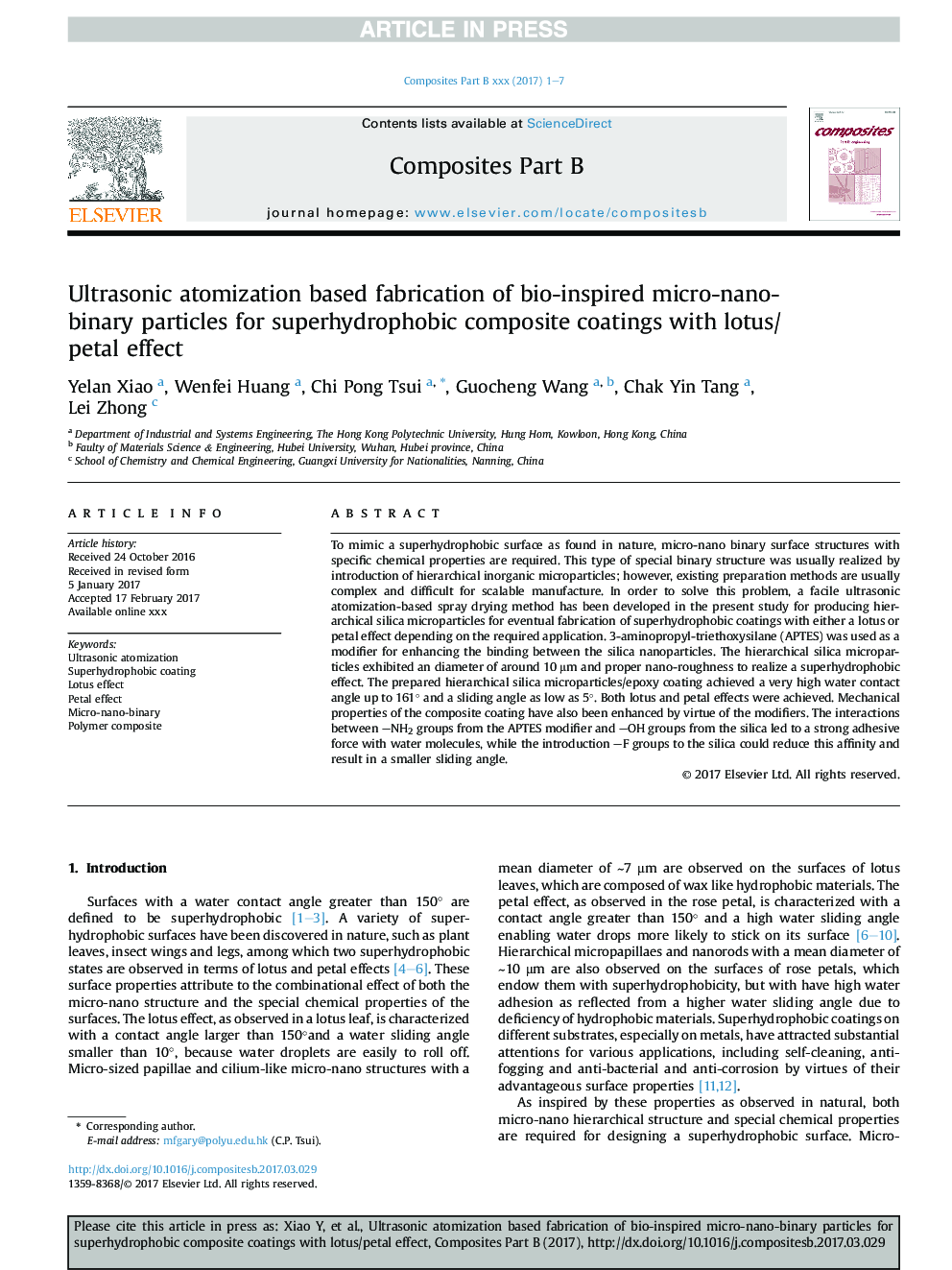| Article ID | Journal | Published Year | Pages | File Type |
|---|---|---|---|---|
| 5021236 | Composites Part B: Engineering | 2017 | 7 Pages |
Abstract
To mimic a superhydrophobic surface as found in nature, micro-nano binary surface structures with specific chemical properties are required. This type of special binary structure was usually realized by introduction of hierarchical inorganic microparticles; however, existing preparation methods are usually complex and difficult for scalable manufacture. In order to solve this problem, a facile ultrasonic atomization-based spray drying method has been developed in the present study for producing hierarchical silica microparticles for eventual fabrication of superhydrophobic coatings with either a lotus or petal effect depending on the required application. 3-aminopropyl-triethoxysilane (APTES) was used as a modifier for enhancing the binding between the silica nanoparticles. The hierarchical silica microparticles exhibited an diameter of around 10 μm and proper nano-roughness to realize a superhydrophobic effect. The prepared hierarchical silica microparticles/epoxy coating achieved a very high water contact angle up to 161° and a sliding angle as low as 5°. Both lotus and petal effects were achieved. Mechanical properties of the composite coating have also been enhanced by virtue of the modifiers. The interactions between -NH2 groups from the APTES modifier and -OH groups from the silica led to a strong adhesive force with water molecules, while the introduction -F groups to the silica could reduce this affinity and result in a smaller sliding angle.
Related Topics
Physical Sciences and Engineering
Engineering
Engineering (General)
Authors
Yelan Xiao, Wenfei Huang, Chi Pong Tsui, Guocheng Wang, Chak Yin Tang, Lei Zhong,
